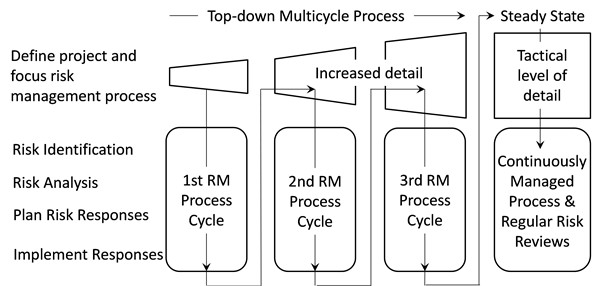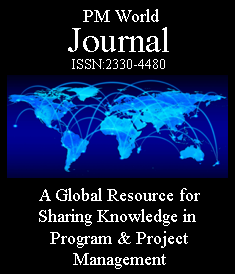A brief guide
Practical Project Risk Management
SERIES ARTICLE
By Martin Hopkinson
United Kingdom
Purpose
- Develop an early focus on high level risks and key risk related decisions.
- Exploit an initial high level decomposition to structure subsequent risk identification.
- Help structure risk models that include all risk sources whilst avoiding duplication.
Background
The term composite risk was coined by Prof Chris Chapman when contributing to the APM guide Prioritising Project Risks (2008). It describes a risk identified at a high level of risk decomposition which could be decomposed into lower-level risks, should that prove to be a productive path for the risk management process to follow. Composite risks may be a feature of the earlier stages of a top-down multi-cycle approach to the risk management process.

Example
The table below illustrates a high-level cost breakdown for a project, with the range in estimated costs indicative of the levels of risk associated with each element.
More…
To read entire article, click here
Editor’s note: This series of articles is by Martin Hopkinson, author of the books “The Project Risk Maturity Model” and “Net Present Value and Risk Modelling for Projects” and contributing author for Association for Project Management (APM) guides such as Directing Change and Sponsoring Change. These articles are based on a set of short risk management guides previously available on his company website, now retired. For an Introduction and context for this series, click here. Learn more about Martin Hopkinson in his author profile below.
How to cite this paper: Hopkinson, M. (2024). Exploiting the Idea of Composite Risks: A brief guide, Practical Project Risk Management series, PM World Journal, Vol. XIII, Issue XI, December. Available online at https://pmworldlibrary.net/wp-content/uploads/2024/12/pmwj147-Dec2024-Hopkinson-Exploiting-Composite-Risks-brief-guide.pdf
About the Author

Martin Hopkinson
United Kingdom
![]()
Martin Hopkinson, recently retired as the Director of Risk Management Capability Limited in the UK, and has 30 years’ experience as a project manager and project risk management consultant. His experience has been gained across a wide variety of industries and engineering disciplines and includes multibillion-pound projects and programmes. He was the lead author on Tools and Techniques for the Association for Project Management’s (APM) guide to risk management (The PRAM Guide) and led the group that produced the APM guide Prioritising Project Risks.
Martin’s first book, The Project Risk Maturity Model, concerns the risk management process. His contributions to Association for Project Management (APM) guides such as Directing Change and Sponsoring Change reflect his belief in the importance of project governance and business case development.
In his second book Net Present Value and Risk Modelling for Projects he brought these subjects together by showing how NPV and risk modelling techniques can be used to optimise projects and support project approval decisions. (To learn more about the book, click here.)
To view other works by Martin Hopkinson, visit his author showcase in the PM World Library at https://pmworldlibrary.net/authors/martin-hopkinson/









